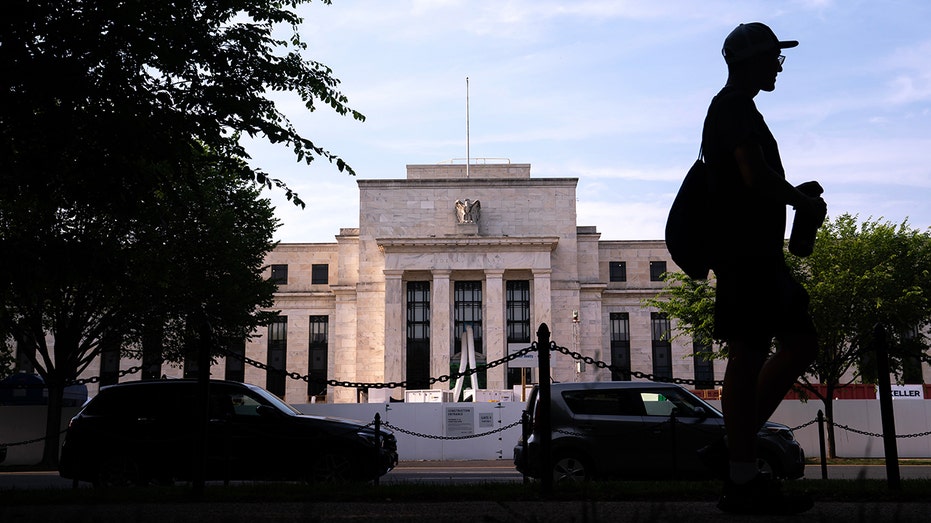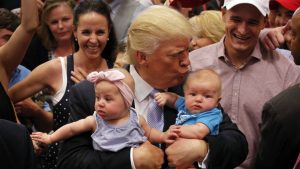A member of the Federal Reserve Board of Governors on Monday said that the U.S. economy is “really healthy” and that there isn’t currently a need to cut interest rates barring a deterioration in the labor market amid uncertainty over the impact of tariffs on inflation.
Federal Reserve Bank of Cleveland President Beth Hammack spoke exclusively with FOX Business Network’s Edward Lawrence and said she thinks the central bank is in a place where it can wait to make changes to interest rates while it sees how economic conditions evolve.
“When I step back and think about where the economy is overall, I see an economy that’s really healthy. You’ve got a labor market that’s been at 4% to 4.2%, stable, healthy, right around that maximum employment side of our mandate,” Hammack said.
“And you’ve got inflation, which has made progress from above 7% right in the height of the pandemic to below 3%. But we’ve been hanging out in that same range below 3% for some period of time, and so I think it’s important that we wait and see how all of the new policies that have been put forward are going to impact inflation,” she added.
TRUMP SAYS POWELL SHOULD RESIGN IMMEDIATELY FROM FEDERAL RESERVE LEADERSHIP POSITION OVER ECONOMIC MISSTEPS
Hammack said that the recent economic data suggests one component of the Fed’s dual mandate to promote stable prices near 2% long-run inflation and maximum employment is in a better place than the other, so the current level of interest rates is appropriate.
“I walk into every meeting with an open mind, waiting to see where the data is going to take us, where the conversation takes us, and what to do. But from where I sit and what I see, what I see is that we’re hitting on our employment side of the mandate, we’re not there yet on the inflation side of the mandate, and so I think it’s important for us to maintain a restrictive posture of monetary policy, to make sure we’re getting inflation down to our target of 2%.”

The Cleveland Fed chief said that the Fed is “pretty close to where the neutral rate is” and that “I see an economy that’s resilient, I see one that’s working really well, and I don’t see a need to really reduce unless we see material weakening on the labor side.”
ATLANTA FED’S BOSTIC WARNS TARIFF IMPACTS COULD CAUSE PROLONGED INFLATION
Hammack was asked if the Fed’s current level of interest rates, which is at a range of 4.25% to 4.5% this year, could run the risk of slowing the economy and said that inflation remaining stubbornly above target has made it important to keep rates somewhat restrictive.
“The modestly restrictive stance that we have right now is important because inflation is still running above our target. We’ve been running around 2.7%,” she said. “As I mentioned last year when we did those cuts in the fall, that was because we had seen inflation come down from above 7% to below 3%. We’re still right now in that ZIP code.”
“If you look at core inflation, it was 2.7% when we started those rate reductions in September. It’s still right around 2.7%. So we had expected to make more progress on that, and we really haven’t seen any, so that’s what the restrictive posture is meant to help,” Hammack said.

“I don’t think that we’re particularly restrictive right now, and I think the economy is performing well. If we see the economy weakening, if we see the growth picture slowing, if we see the labor picture slowing, then of course we’re going to respond to that. We take both sides of our mandate very seriously,” she added.
FED CHAIR POWELL CONFIRMS TARIFF CONCERNS PREVENTED INTEREST RATE CUTS SO FAR THIS YEAR
President Donald Trump’s tariffs have created uncertainty for businesses and consumers, particularly with the timing and depth of price increases, which have impacted the Fed’s assessment of when it should go about interest rate cuts.
Federal Reserve Chair Jerome Powell previously noted that the uncertainty about those tariff impacts contributed to the central bank refraining from interest rate cuts so far this year. Hammack echoed that sentiment, saying that the central bank needs to wait and see how tariffs play out across the economy as it evaluates its next interest rate move.

“If you look on very specific things, if you look at steel, which had a pretty clean 25% tariff that was put in place in March, increased last month to 50%, you can see that over a three-to-four month period, the price of steel went up by about 23%, 21%,” she said. “And so you do see in discrete places where you had a very clear, very specific tariff, you can see some of those impacts coming through.”
“In some of these other places where you had these broader country tariffs, and then they got reduced, maybe they’re going back up again. It’s not clear where they’re going to end up,” Hammack said.
“There’s just a lot more uncertainty and what we hear from businesses is that they’re still working through their inventory, they have a lot that they purchased before the tariffs came in place, and they’re still working to get that out,” she noted.
The Fed’s next monetary policy meeting is scheduled for later this month on July 29-30.
Read the full article here












